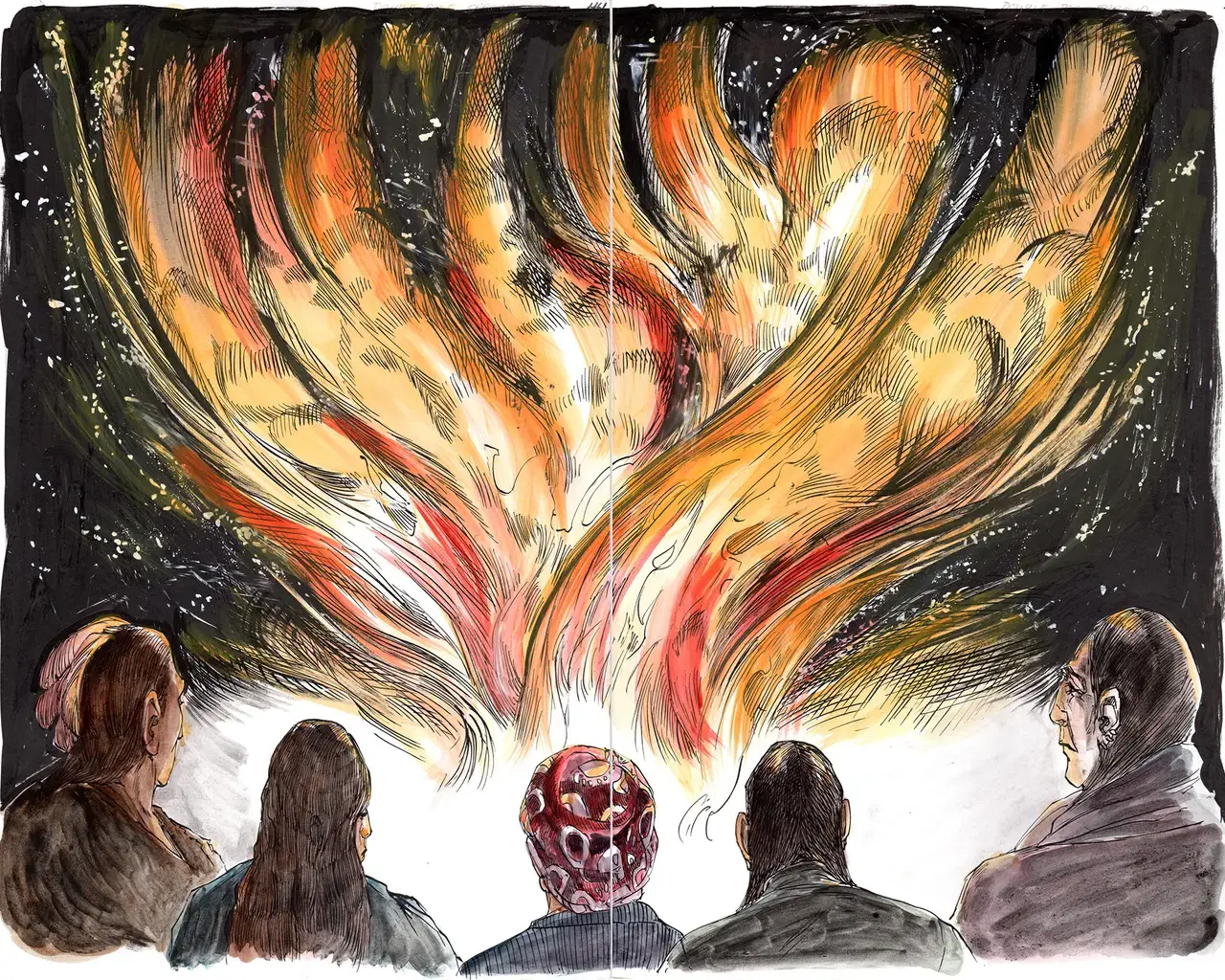
Projects supported by our grants often include publications that document newly created artistic work, reflect on contemporary social issues, or re-examine historical narratives. Here, we survey ten books that preserve, extend, and elevate the ideas embedded in projects that explore Black Americans’ experiences, environmental design, the graphic novel format, and more.
Each of the publications listed below is available for purchase or free perusal online.
Ghost River: The Fall and Rise of the Conestoga
Ghost River is the culminating publication of the Library Company of Philadelphia’s project Redrawing History: Indigenous Perspectives on Colonial America. Created by Native American artists—illustrator Weshoyot Alvitre and writer Lee Francis—and published by Red Planet Books and Comics, the graphic novel recontextualizes the 1763 massacre of the Conestoga Tribe by armed settlers from the perspective of indigenous communities. American Indian magazine praised the novel as “a provocative depiction of the incidents from the Conestoga people’s perspective, a tale that eerily echoes difficult themes present in society today.”
Monument Lab: Creative Speculations for Philadelphia
“What is an appropriate monument for the current city of Philadelphia?” That was the guiding question at the heart of the 2017 Monument Lab project, produced by Mural Arts Philadelphia, which featured more than 20 temporary public artworks installed throughout the city. Edited by Monument Lab co-founders Paul M. Farber and Ken Lum, Monument Lab: Creative Speculations for Philadelphia (Temple University Press) documents works by artists including Tania Bruguera, Mel Chin, Emeka Ogboh, and Karyn Olivier and offers critical reflections “to generate new ways of thinking about monuments and public art,” the publisher explains.
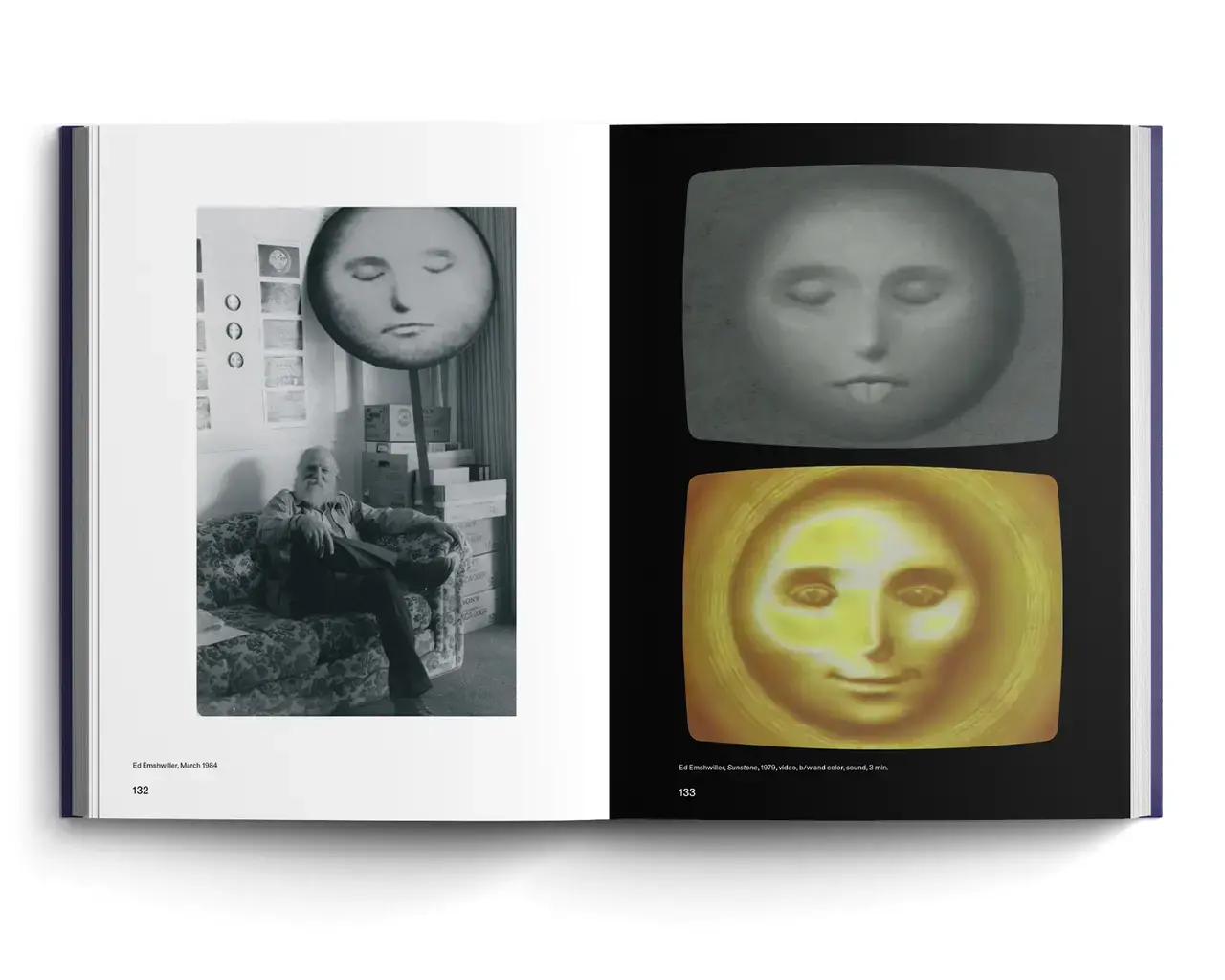
Dream Dance: The Art of Ed Emshwiller
Lightbox Film Center’s Ed Emshwiller retrospective documented the artist’s influential career, which encompassed abstract expressionist painting, commercial illustration, film, video, and other visual art. In a review of the exhibition, Art in America described his work as “complexly layered musings on interpersonal relations, the interconnectedness of the universe, and the form of film itself.” Reflecting Emshwiller’s diverse output, the exhibition catalogue published by Anthology Editions includes film stills, paintings, science fiction book covers, notes, sketches, and other ephemera.
Design with Nature Now
Pioneering ecological design projects are showcased in Design with Nature Now (Columbia University Press), a companion to the exhibition presented by the University of Pennsylvania Stuart Weitzman School of Design. Named a best book of 2019 by the American Society of Landscape Architect’s The Dirt, the publication traces the development of landscape architect Ian McHarg’s ecological approach to design and explores the enduring impact of his work on contemporary design today.
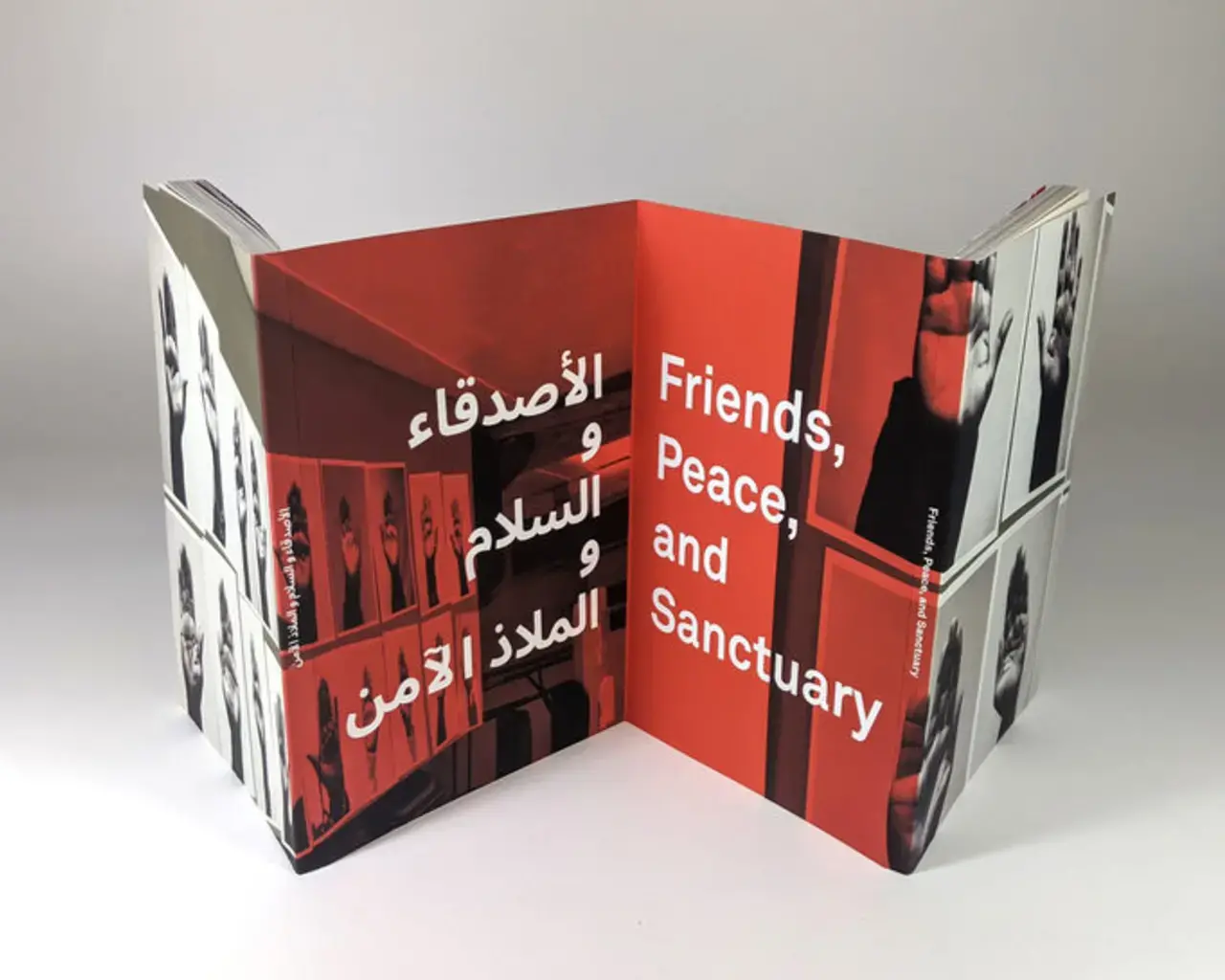
Friends, Peace, and Sanctuary
Swarthmore College’s Friends, Peace, and Sanctuary brought resettled people from Iraq and Syria together with book artists to delve into questions about displacement and refuge, history and experience through artistic expression and visual storytelling. The catalogue houses two books—one in English, one in Arabic—under a single cover. It received a Silver Indigo Award in the 2020 book design category. Indigo notes that the publication’s two-in-one structure “attempts to express the experience of finding commonalities and differences akin to the refugee experience through design and layout.”
The School for Temporary Liveness
Reimagining theater through the poetic frame of a school, the University of the Arts School of Dance staged an eight-day pop-up series at the Philadelphia Art Alliance. The program imagined “what a school can do and be” through performances by artists nora chipaumire and Isabel Lewis, as well as workshops, lectures, and conversations. Notes on the School for Temporary Liveness offers reflections on and responses to the project, all written by students of the school. “What these generous contributions make clear is that knowledge is not produced by school, rather, it emerges from our experiences of moving through school,” writes project curator Lauren Bakst.
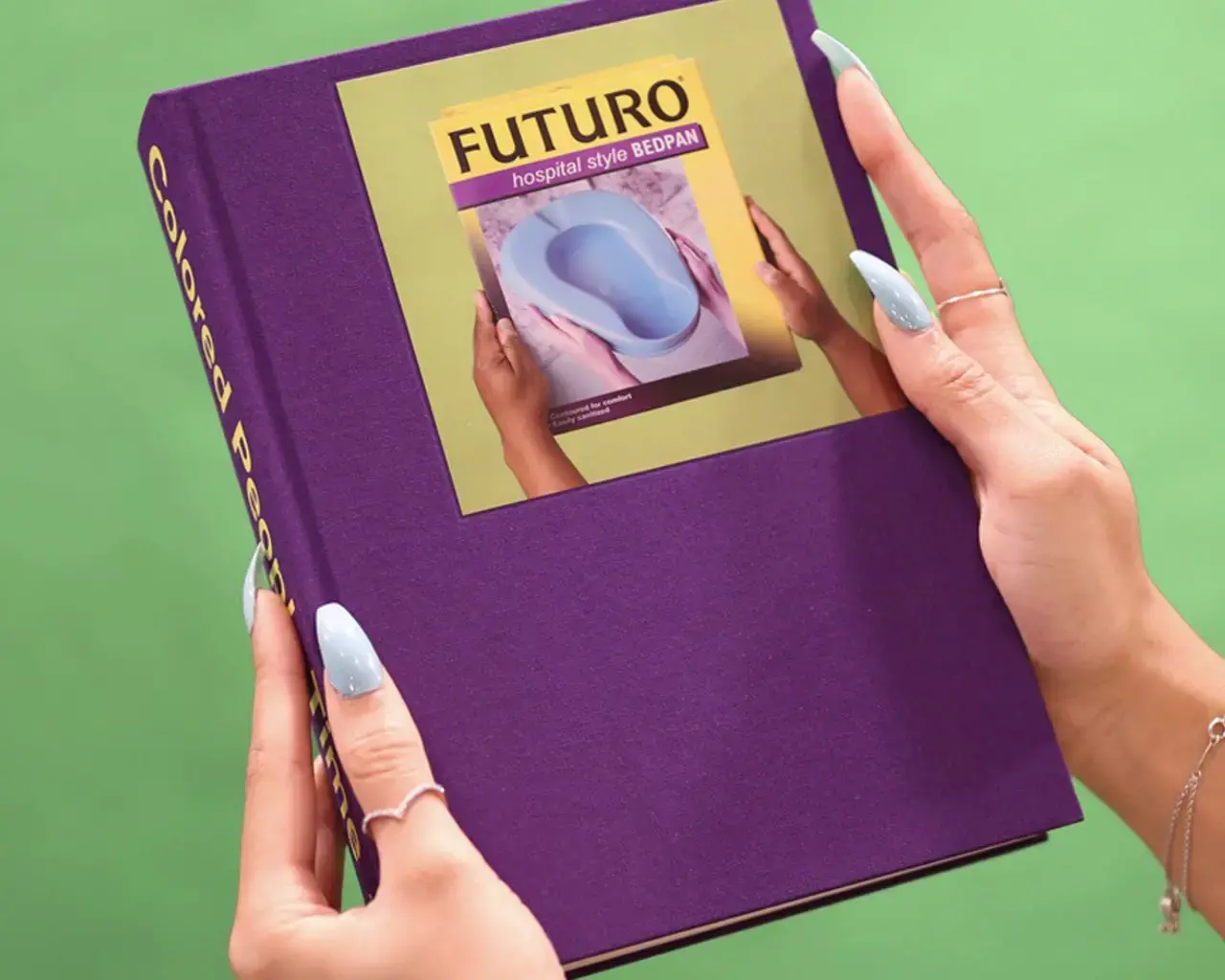
Colored People Time
The Institute of Contemporary Art at the University of Pennsylvania’s trilogy of exhibitions—Mundane Futures, Quotidian Pasts, and Banal Presents—examined the experience of blackness in America. The Colored People Time catalogue features works by artists Carolyn Lazard, Cameron Rowland, Sable Elyse Smith, Martine Syms, and others; text from contributors such as exhibition curator and ICA associate curator Meg Onli, Huey Copeland, Eve Ewing, and Michael Hanchard; and historical objects from the Black Panther Party, Sutton E. Griggs, the National Institutes of Health/Getty Images, and the African collection at the University of Pennsylvania Museum of Archaeology and Anthropology.
Digging Deeper
RAIR offers an online version of the culminating publication from Digging Deeper: Field Studies Made Possible by the Waste Stream, which studied contemporary urban life through the lens of a recycling facility. The publication offers insight into how human activity affects the environment and provides illustrations and a glossary of more than 40 terms (e.g. “consumerism,” “short dumping,” and “emotional resonance”), defined specifically as they pertain to “the intersection of art, anthropology and the waste industry.”
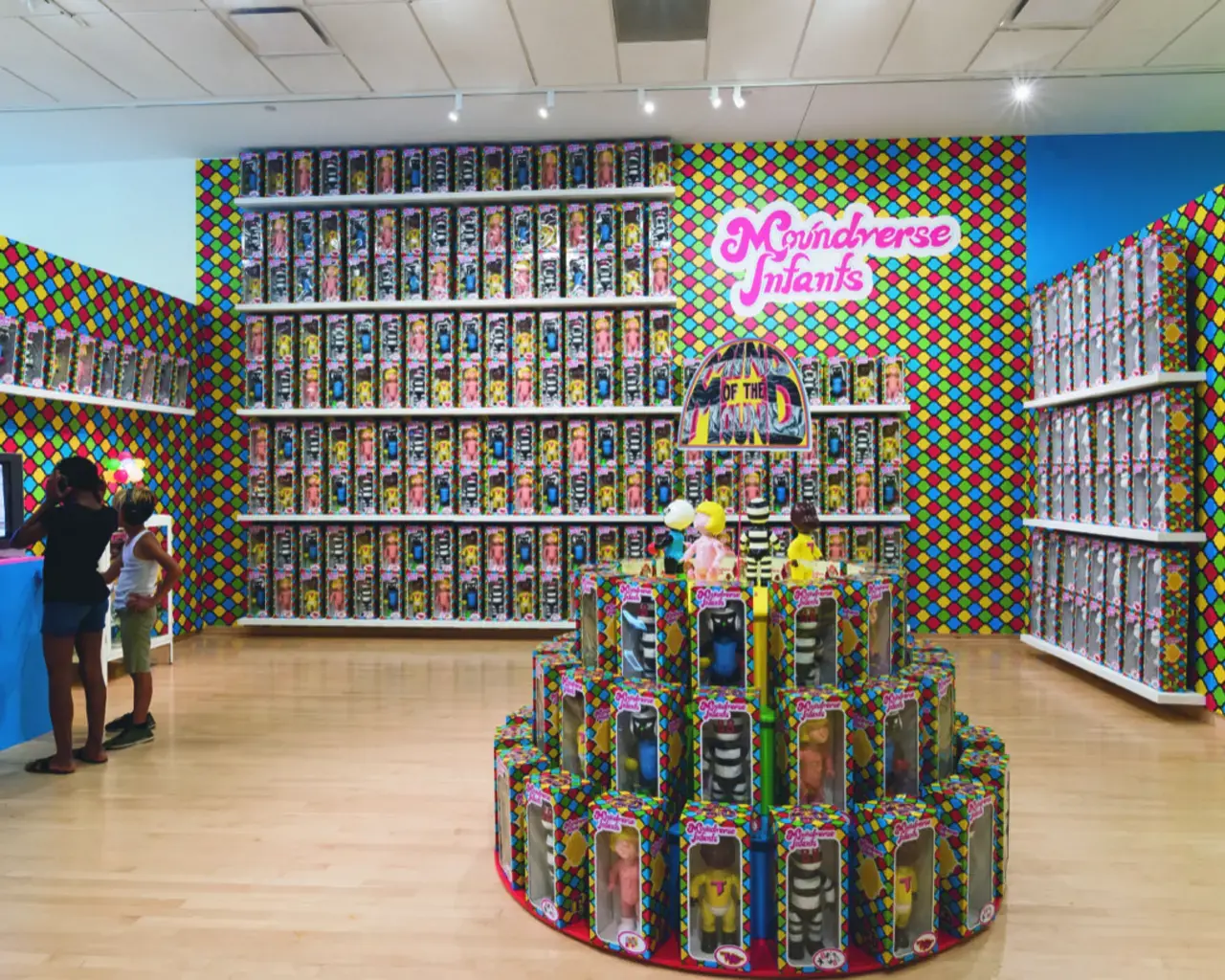
Moundverse Infants
“Dolls allow us not only a window into our cultural past, but can offer solutions to existing social problems,” explains visual artist Trenton Doyle Hancock in this catalogue for Moundverse Infants (Art Editions North). In his exhibition at Temple Contemporary, Hancock presented his collection of white dolls that the artist has collected over the past 20 years alongside black dolls from the Philadelphia Doll Museum and a new set of his own creation. The colorful book features dolls based on a cast of characters who reappear throughout Hancock’s body of work and examines the emotional resonance and transformative power dolls can offer as a medium.
Inside Killjoy’s Kastle: Dykey Ghosts, Feminist Monsters, and Other Lesbian Hauntings
Allyson Mitchell and Deirdre Logue’s Killjoy’s Kastle—an immersive performance installation that draws on elements of traditional haunted houses to examine themes of identity, race, gender, and class—made its Philadelphia premiere in a presentation by Timothy Belknap, curator and co-director of Icebox Project Space. In the project’s accompanying publication (UBC Press), colorful photos bring Killjoy’s Kastle to life, and contributors, including Sara Ahmed, Heather Love, Kyla Wazana Tompkins, and Helena Reckitt, consider the role of lesbian feminist histories and political artwork in creating new ways of understanding the past.








